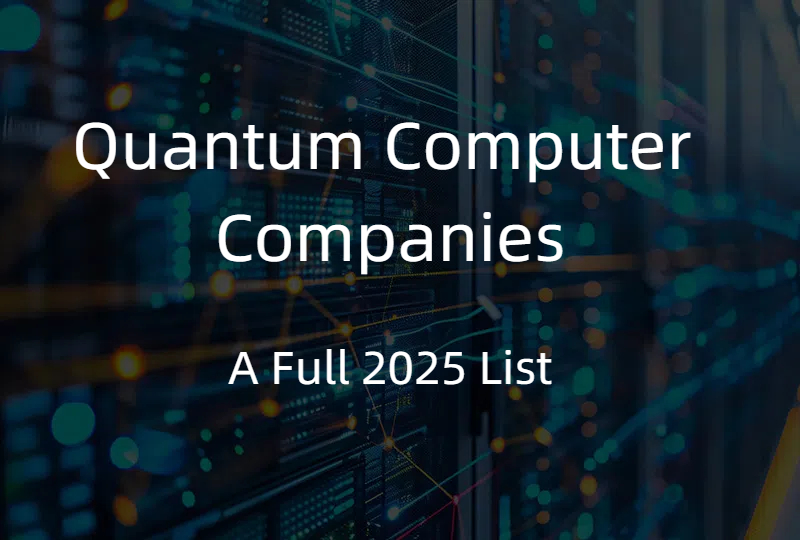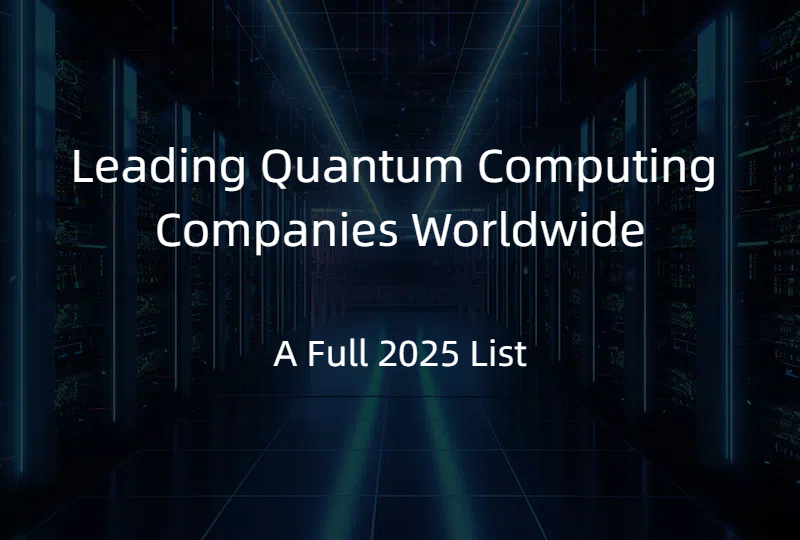Quantum Computing Valuation: Navigating the Hype and the Future
2025.10.31 · Blog quantum computing valuation
The quantum computing sector has emerged as one of the most compelling investment frontiers of the 2020s, commanding unprecedented attention from venture capitalists, governments, and major technology corporations. Yet valuing this nascent industry presents a complex puzzle: the technology promises revolutionary impact while facing significant technical hurdles and uncertain timelines to profitability. Understanding quantum computing valuation requires examining market projections, investment patterns, company-specific metrics, and the inherent challenges that distinguish this sector from mature technology markets.
The Explosive Market Growth and Valuation Metrics
The global quantum computing market demonstrates remarkable projected growth, with estimates varying based on scope and methodology. According to MarketsandMarkets research, the quantum computing market is projected to reach $3.52 billion in 2025 and expand to $20.20 billion by 2030, representing a compound annual growth rate of 41.8%. More aggressive projections suggest even higher valuations, with Zion Market Research predicting the market will reach $17.15 billion by 2034 at a CAGR of 32.14%.
The most optimistic scenario comes from McKinsey & Company, which forecasts that quantum technologies could generate up to $97 billion in revenue worldwide by 2035, with quantum computing capturing the bulk of that revenue at approximately $72 billion. However, McKinsey also notes that about 80% of this value should accrue to end users in industries like pharmaceuticals and financial services, with only $90 billion to $170 billion flowing to quantum computing industry players themselves.
Investment capital flooding into the sector underscores market confidence. In 2024, quantum technology startups received nearly $2 billion in funding, representing a 50% increase from 2023. The first three quarters of 2025 alone witnessed $1.25 billion in quantum computing investments, more than doubling the previous year's figures and bringing total equity funding to $3.77 billion by September 2025. This acceleration demonstrates institutional confidence that quantum computing is transitioning from research to commercialization.
High-Profile Company Valuations
Recent funding rounds have established ambitious valuations for leading quantum companies:
PsiQuantum achieved a $7 billion valuation in September 2025 after securing $1 billion in Series E funding led by BlackRock, Temasek, and Baillie Gifford, with participation from Nvidia's venture capital arm. The company plans to develop 1-million-qubit fault-tolerant machines operational by the end of 2027.
Quantinuum, a collaboration with Honeywell, reached a $10 billion valuation following a $600 million capital influx announced in September 2025.
IonQ stands out as the first pure-play quantum company to go public, trading at a market capitalization of $24.5 billion with 712% one-year performance as of October 2025, demonstrating strong investor confidence in trapped-ion quantum technology.
Rigetti Computing maintains a market cap of $13 billion, offering superconducting quantum systems with vertical integration capabilities.
SandboxAQ, blending quantum technology with artificial intelligence, achieved a $5.75 billion valuation after raising $450 million in Series E funding with participation from Nvidia and Alphabet.
SpinQ, a Chinese quantum company, secured several hundred million RMB in Series B funding in July 2025 from government-backed funds and institutional investors, demonstrating confidence in its commercialization strategy across superconducting quantum computers, NMR quantum computers, and cloud platforms.
These valuations reflect investor expectations of future revenues and technological success, though they also signal significant speculative premiums typical of emerging technology sectors.
Geographic Distribution and Market Dynamics
North America currently dominates the quantum computing market, holding approximately 43.86% of the global share in 2023, driven by presence of IBM, Google, Microsoft, and numerous startups. However, significant growth is occurring in the Asia-Pacific region, particularly in China, driven by substantial government investments and policy support. Europe is advancing strong initiatives in quantum communication and cryptography, creating a truly global competitive landscape.
Government initiatives are playing a pivotal role in market development. The United States National Quantum Initiative Act and the EU Quantum Flagship Program are driving R&D funding, workforce development, and industry collaboration. Public funding for quantum technology startups reached $680 million in 2024, representing 34% of total startup funding, showing increased government urgency around quantum technology development.
The NISQ Era Challenge: Valuation Complications
A critical factor complicating quantum computing valuations is the current technological phase known as the Noisy Intermediate-Scale Quantum (NISQ) era. Current systems contain between 50 and 1,000 qubits and lack the fault tolerance necessary for executing powerful quantum algorithms like Shor's factoring algorithm. This limitation creates a valuation gap between current capabilities and theoretical future potential.
Boston Consulting Group, which previously estimated quantum computing could create $450 billion to $850 billion in value by 2040, has revised its near-term value creation assumptions as the market matures more slowly than expected. The company now segments the market into three phases: NISQ until 2030, broad quantum advantage 2030-2040, and full-scale fault tolerance after 2040.
This reality creates distinct valuation approaches for different company types:
Hardware-focused companies operate on the assumption that quantum volume—measured by qubit count and fidelity—will increase predictably. Google's Willow chip with 105 superconducting qubits achieving single-qubit fidelities above 99.9% demonstrates progress, but the path to commercially useful quantum advantage remains uncertain.
Software and platform companies like IonQ are valued partly on contracted revenue, which provides more concrete valuation anchors. IonQ has secured over $100 million in commercial contracts across pharmaceuticals, aerospace, and logistics sectors, providing tangible revenue visibility.
Cloud platform providers such as IBM, Microsoft, and Amazon derive quantum computing valuation as a component of broader cloud business valuations. IBM has booked $1 billion in cumulative quantum business since 2017, a meaningful but relatively modest contribution to IBM's total enterprise technology services business.
Revenue Realities and Timeline Uncertainties
The path to profitability remains uncertain, creating valuation risk. Current commercial quantum computing revenue generation is limited. While quantum computing companies alone generated $650 million to $750 million in revenue in 2024 and are expected to surpass $1 billion in 2025, these figures include hardware, software, and services revenue across the entire ecosystem.
IonQ projected revenue between $82 million and $100 million for 2025, while D-Wave expected around $36 to $41 million. These figures, while representing growth, show that even leading quantum companies remain in early revenue stages compared to their billion-dollar valuations.
Jensen Huang, CEO of Nvidia, injected a note of caution into valuations when he stated that practical, widely useful quantum computing is likely still 15 to 30 years away, with 20 years being the most realistic estimate. This commentary sparked significant downward pressure on quantum computing stocks. However, many industry experts argue that niche applications in drug discovery, finance, and materials science could generate meaningful revenue within 5 years, even if universal fault-tolerant quantum computing remains distant.
Valuation Multiples and Comparative Analysis
Quantum computing companies trade at substantially different valuations based on their position in the technology stack:
Pure-play quantum hardware companies typically trade at high revenue multiples reflecting their speculative nature. IonQ's market capitalization relative to projected revenue represents premium valuation typical of high-growth technology sectors.
Quantum-as-a-Service providers command valuations based on recurring revenue models, cloud platform dominance, and ecosystem lock-in effects. IBM's quantum business contributes to IBM's broader enterprise valuation multiples.
Specialized quantum application companies targeting specific industries like drug discovery attract premium valuations reflecting large addressable markets within narrow segments.
Comparative to classic semiconductor or software development timelines, quantum computing companies operate under compressed timelines. While classical semiconductors took decades from laboratory to widespread commercialization, quantum companies aim to demonstrate practical utility within 5-10 years, partly through government support and clear applications in high-value industries.
Market Size Limitations
A critical constraint on aggregate quantum computing valuations is the relatively modest predicted market size for quantum computing services. Juniper Research estimates quantum technology commercial revenue will rise from $2.7 billion in 2024 to $9.4 billion by 2030, with only approximately 300 quantum computers deployed globally by that date. This suggests that valuation growth will depend more on per-unit pricing increases and margin expansion than on massive deployment volumes.
The low return on investment projected for 2030—only 6% despite rapid deployment—indicates that quantum computing will likely remain a capital-intensive, specialized sector rather than a mass-market technology in the short to medium term.
Investment Thesis and Valuation Justification
Despite these challenges, investors justify high quantum computing valuations through several factors:
Extreme problem-solving potential: Quantum computers could solve problems in drug discovery, financial modeling, cryptography, and materials science that remain computationally infeasible for classical systems, potentially unlocking trillions of dollars in economic value.
Government support and defense applications: National security concerns around "Q-Day" encryption threats and competitive positioning drive government investment, providing fundamental demand support independent of immediate commercial applications.
Portfolio diversification benefits: For venture capital and corporate strategic investors, quantum computing positions represent exposure to transformational technology with limited downside in the context of diversified portfolios.
First-mover advantage: Early investors in companies that achieve quantum advantage in specific applications could capture disproportionate returns before competition emerges.
Hybrid quantum-classical systems: Near-term practical applications combining quantum and classical systems create revenue opportunities before fully fault-tolerant systems emerge.
Conclusion: Valuation Under Uncertainty
Quantum computing company valuations reflect genuine technological progress tempered by substantial execution risks and timeline uncertainties. The market's current state—combining fundamental breakthroughs in quantum error correction, hybrid quantum-classical systems, and commercial pilots with cautionary timelines to full utility—creates a valuation environment where both bull and bear cases have merit.
Investors in quantum computing must reconcile current high valuations with realistic timelines to profitability, which likely extend through the 2020s and into the 2030s for most applications. The technology may follow a bifurcated path, with niche applications in finance and drug discovery generating meaningful revenue by 2030 while broader commercialization remains distant. As the sector transitions from research to early commercialization, valuations will increasingly depend on demonstrated progress toward specific industry applications rather than purely theoretical potential, creating both opportunities and risks for investors navigating this complex, rapidly evolving technology landscape. This article is partly based on publicly available information and relevant technical literature. It has been compiled and analyzed by our team for learning and communication purposes only.
Featured Content






